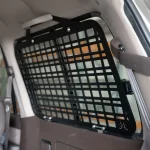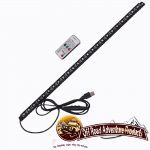 Energy is required in every sphere of life, be it in industry or at home. For many years, energy has been derived from burning fossil fuels, but this resource is not inexhaustible, and concerns have arisen about the fuels running out. Moreover, burning fossil fuels is not environmentally friendly, because it generates CO2 emissions that pollute the air and eventually break down the ozone layer. Therefore, alternative energy sources should be implemented, and modern technology has made this possible. Solar panels are designed to absorb the radiation coming from the sun and transform it into energy, which, in turn, creates heat or electricity. As a result, solar panels are a good way to make the most of nature by using the advances of technology. They are a special type of electronics that allow everyone to invest in the well-being of the world.
Energy is required in every sphere of life, be it in industry or at home. For many years, energy has been derived from burning fossil fuels, but this resource is not inexhaustible, and concerns have arisen about the fuels running out. Moreover, burning fossil fuels is not environmentally friendly, because it generates CO2 emissions that pollute the air and eventually break down the ozone layer. Therefore, alternative energy sources should be implemented, and modern technology has made this possible. Solar panels are designed to absorb the radiation coming from the sun and transform it into energy, which, in turn, creates heat or electricity. As a result, solar panels are a good way to make the most of nature by using the advances of technology. They are a special type of electronics that allow everyone to invest in the well-being of the world.
Although they are not yet used very widely, solar panels are becoming more popular, and increasingly more people benefit from this green energy solution, which also helps to save them money regardless of high initial costs. Solar panels cannot be found in every supermarket or corner shop, but they can be conveniently purchased from online auction sites, such as eBay. When buying solar panels, it is essential to know how they work and what types are available.
Solar Panels Explained
Solar panels are large panels that are installed onto the roof. They function best if they are not in shadow, but are exposed to the sun most of the time. Therefore, they are often installed facing in a southern direction. The panels take the sun’s rays and transform them into energy that can then be used in order to power or heat a house. In addition, smaller solar panels, which can be taken on camping trips, are also produced.
Solar panels contain photovoltaic cells, or solar cells, that have a photovoltaic effect, transforming light into energy. The electrons absorb the energy, become excited, and thus jump to the conduction band. The electrons are accelerated, and as a result, electromotive force, or energy, is generated. The cells are sometimes connected with each other in series in order to achieve the desired output. Alternatively, they are connected in parallel in order to achieve the necessary current capability.
The solar cells are usually rigid, in order to keep them safe from moisture and mechanical damage. Besides the panels themselves, solar energy systems also require some other parts, such as interconnection wiring, a solar tracker or battery, and an inverter.
Solar Panel Types
The main purpose of solar panels is to generate energy from the sun’s rays, but there are different types of panels that create slightly different kinds of energy. The energy can be used for electricity or heating. Therefore, the two types are photovoltaic panels and water heating systems. In addition, portable solar panels are also produced, and these can be taken virtually anywhere.
Solar Photovoltaic Panels
Photovoltaic (PV) solar panels use the sun in order to create electricity, which can then be used in order to power the house. Energy is derived during the day, and there is no need for direct sunshine, although this enhances electricity production, and ideally, PV panels should be installed in an unshaded location. Compared to traditional gas and electric systems, they do cost more, but help to reduce bills in the long run. The panels are rather heavy and thus require a strong roof.
These panels are made from silicon. In total, there are four types of silicon that can be used for this application. The silicon types differ in terms of their cuts and treatment technologies. Amorphous, monocrystalline, polycrystalline, and hybrid silicon are the materials available. Amorphous cells are composed of a thin layer of silicon that is sprayed onto a backing material. Thanks to its thinness, the material does not cost much. Hybrid cells, which combine crystalline cells with thin film, are the most efficient, but they also cost the most.
Monocrystalline silicon is considered to be more efficient than polycrystalline. Efficiency is a matter of the amount of the sun’s energy that is being used by the system per unit area. The efficiency of hybrid panels is over 17 per cent, while for monocrystalline and polycrystalline silicon, it is 13-17 and 11 percent, respectively.
Portable Solar Panels
The two aforementioned types of solar panels are installed onto the roof, but smaller panels also exist. They are portable and can be used for camping purposes. They give users the freedom to recharge their phones, or to power other devices wherever they go. They are small and usually foldable, so they do not take up too much space in a backpack. When made for camping, they are weather-resistant.
Buying a solar panel is an important decision, and when doing so, it is helpful to know the relevant terminology in order to understand what the product is all about.




